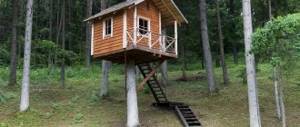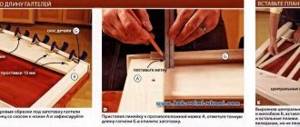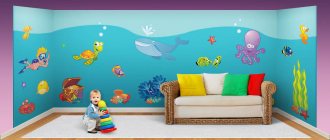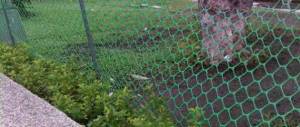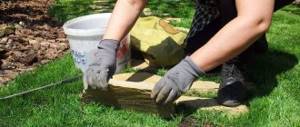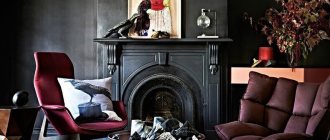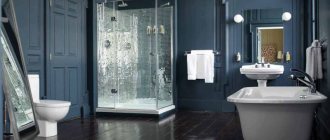Design options
They are selected depending on several important factors:
- number of dogs - for a couple or a female with puppies, of course, more space will be required than for one watchdog;
- breeds - herding, mountain dogs are much less sensitive to cold than smooth-haired and short-haired dogs, so the degree of insulation of the building will vary greatly;
- conditions for keeping the pet. If he freely “walks around the territory”, then the house may be smaller than for a dog sitting on a chain;
- weather conditions. In a rainy climate, a security guard will need a roof over his head in any case, even if there is no severe cold. For very hot climates, lattice or canopy-style dwellings are suitable.
In addition, booths are distinguished by the materials used. Most often they are built from wood and wood-based materials, including frames. However, in some cases, more capital structures are possible - for example, made of brick or gas blocks.
Structurally, “houses” are distinguished as:
- a canopy with more or less fenced sides;
- A-shaped (“hut”);
- traditional rectangular shape with a gable or flat roof;
- buildings with more complex geometry.
You can supplement the dog house with your own hands with a small platform - a terrace - with or without a canopy, for the dog to rest outside the covered building. Feeding and food storage areas are often added.
What materials are dog houses made from?
Let's figure out how to make a dog kennel with your own hands, and what materials you can use to build a good house. You can build from almost anything, but let's focus on the most accessible and common materials: wood and brick. Coniferous wood has proven itself well. And it is not at all necessary to build a kennel from treated boards; you can make a real log house. A very budget option involves the use of plywood and floorboards. To ensure that the wood lasts a long time, the outside is treated with an impregnating protective compound, and the inside is insulated, if necessary. Brick is more monumental: such booths are heavy and massive, so it is better to install them on a strip foundation.
Related article:
Enclosure for dogs : photos and types of structures with descriptions, what building materials are needed to independently build an enclosure for dogs, how to cover the floor of the enclosure and what is the best material to build walls from, the dimensions of street structures, their arrangement, how to make an enclosure for an apartment - read the publication.
General principles of design and design adaptation
Regardless of which type of building is chosen, you must first make sure that the size of the booth will be sufficient for the dog. To do this you need to measure:
- the total length of the animal - from the tip of the nose to the base of the tail, with the tail spread out;
- full height (in a standing and sitting position, from the ground to the top of the head);
- height at the withers - this size determines the minimum height of the entrance hole;
- chest width.
It should be taken into account that for a puppy that is not fully matured, all sizes are taken “with allowance”, according to the maximum dimensions of an adult dog of this breed.
On average, the parameters should be like this:
- the length and width of the booth are approximately equal to the maximum length of a lying dog plus 10...15 cm;
- height corresponds to the full height of the pet;
- The width and height of the inlet should be 5...10 cm greater than, respectively, the width of the chest and the height at the withers.
A kennel for two dogs is built according to the same principle, but expands to the length of the lying dog in width (less often in length). In this case, it is better to make two holes for entry. Naturally, if one of the dogs in a pair is larger, all measurements are made specifically for its dimensions.
A small comparison table that will help you navigate the dimensions of the kennel for different breeds of dogs.
| Dimensions of dogs | Breeds, maximum height in cm | Booth dimensions (width x length x height), cm | Dimensions of the hole (inlet), (width x height), cm |
| Small | Small mongrels, dachshunds, fox terriers, spaniels, up to 50 | 80…100x50…70x60…80 | 30…40x40…50 |
| Average | Husky, Rottweiler, Bernese Mountain Dog, Labrador, Moscow Watchdog, German Shepherd, Bobtail | 150…170x100…120x70…80 | 50x35…40 |
| Large | Alabai, Caucasian Shepherd, St. Bernard, Akita Inu | 180…200x140x90 | 60…70x40…50 |
| Particularly large | Tibetan and English Mastiff, Great Dane, Irish Wolfhound | 210x140x90…100 | 75x40 |
How to decide on the size of a doghouse
When you need a booth for a large dog of breeds such as Alabai, Tibetan Mastiff, St. Bernard, it is important not to make a mistake with the size: a growing dog should not feel like a salted mushroom in a jar in the house. And it’s not comme il faut for a small dog to sit in a huge building in winter - there’s no way it can warm it with its breath.
The size of the dog house depends on the breed. Taking these indicators into account, they design not only the external part of the building, but also make a discount on the insulation - it will steal a little space
We measure the pet - the length of the kennel should be +5 cm from the length of the animal from nose to tail. The width is indicated based on the height of the dog plus 5 cm. Now you need to measure the circumference of the chest: the gap should be wider by the same 5 cm and 5 cm longer than the height of the animal at the withers.
Advice! If the dog has not yet grown up, then you can rely on indicators from reference books.
The height of the kennel should exceed the height at the withers by 15 cm: the dog should not touch the ceiling with its head if it wants to sit inside. The depth is designed to allow the pet to lie comfortably on its side and be able to stretch its paws freely. The height of the animal at the withers is increased by 15 cm and depth is obtained.
When designing a kennel with vestibules, the dimensions of the animal are calculated: small breeds will be comfortable in a room 75 cm long, 65 cm wide, 65 cm high, but a shepherd dog will appreciate 120-125 cm in length. Very large animals will need a room length of 145 cm, a width of 105 cm and a height of 100 cm.
What to build from
The best option is considered to be a wooden building made from chamber-dried lumber or natural moisture (in the second case, natural shrinkage will have to be taken into account). Heat-treated and modified wood is undesirable. When creating a frame structure, care should be taken to waterproof the walls and roof.
When using brick, concrete, foam and aerated concrete, it is advisable to line the interior with wood or wood-based materials. Strongly smelling paints and coatings should not be used.
Important: the materials used for construction must not be toxic or treated with toxic coatings! Dogs often chew on boards or posts when idle (especially puppies), so care should be taken to ensure that the surfaces are durable and smooth. Protruding nails, screws, staples and other sharp objects are unacceptable!
Let's look at several popular do-it-yourself dog kennel designs.
Basic recommendations
If you want to make a dog house with your own hands, we recommend listening to some tips:
- Firstly, the constructed structure must fully correspond to the size of your pet, as well as its temperament. If you want to make a house for a puppy, then in this case you should also take into account the fact that he will grow up. Please note that the more space there is in the structure, the more comfortable the dog will feel in it.
- Secondly, before you make a dog house with your own hands, you need to consider what position your dog likes to lie in. For example, if an animal often sleeps curled up, then an oval or triangular design would be an excellent solution. In addition, such accessories can be placed in a corner without any problems, thus saving space. If the dog likes to sleep on its side, then it would be better to build a rectangular structure.
- Third, consider how shaggy your pet is. After all, when summer comes, it will be hot in such a house, which means that it can be additionally equipped with a removable roof.
How to build a booth in the form of a canopy
This design is suitable for summer and warm climates. Its basis is a frame in the form of a tetrahedron, flooring, a gable or flat roof on two or three pairs of rafters. The model can be supplemented with lattice or screen-type side fences (including removable ones).
This is what the result should be:
Dimensions of the booth (width x length x height) – 100x135x150 cm (height measured along the roof ridge).
To build you need:
- four racks with a cross section of 40x40 or 50x50 mm and a height of 100 cm;
- two planks-beams 40x40 or 50x50 mm for the base and top (135 cm);
- timber for rafters, section 50x50 or 40x60 mm - about 2.5 m;
- thin planks for cladding with a section of 10...15x70...80 mm, approximately 20 pieces of 135 cm each, 10 of 100 cm each and 15...18 for flooring, 90 cm each.
Roofing material is also required, in the original these are also 10x70 strips or other sections. The quantity is selected so that they cover the roof slopes tightly, without gaps. Example: for planks 15x100 mm, you will need 14...15 (depending on the size of the roof overhang) pieces about 70 cm long for each slope.
Operating procedure:
- the base is assembled - the flooring is laid on two long beams;
- racks are mounted;
- the roof base and rafters are installed;
- fencing of the sides and rear sides is carried out;
- roof decking is being done.
This “house” should be supplemented with a soft mattress for the dog. Alas, it is unlikely that one dog will be allowed to live in such a “house” - there will immediately be applicants for his kennel. Or neighbors
